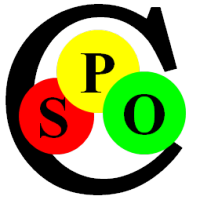This Section presents Characteristics of different Fonts and proposes some open Source Fonts for optimal Display of most Unicode Characters.
Font Characteristics: Size, Weight, Slope, Family and Width
- Font Size can be continuously varied even in fractional Steps.
- Weight often comes only in two Sizes: 'bold' and 'normal', but can be specified from 0 to 1000 in CSS
- Slope also comes as 'italic' and 'normal'
- Fonts Widths are separated into proportional and fixed-width ("monospace") Fonts
- the top generic Font-Families in Web-Design are: "serif", "sans-serif", "cursive", "fantasy" and "monospace"
Monospace Fonts for Programming
Because monospace Fonts allow for Character Alignment, it is typically used for Programming or tabular Data Arrangement. This is also essential for Text-based User-Interfaces (TUIs) to draw
Frames and Graphics.
Unfortunately there are only few Fonts with Characters of exactly the same (or double) Width and broad Unicode Support. One notable Exception is the Open-Source DejaVu Font Set. It comes in three Styles: Serif, Sans and Monospace and features 'condensed' and
'light' Variants. We highly recommend installing and using this Font for the Spoc-Text Editor.
A Font with Serifs for the Pleasure of Reading
Fonts with Serifs are typically experienced as a better Reading, but only if the Medium has a high Resolution. On low-resolution Screens better use Arial or another Sans-Serif Font.
A Font without Serifs to separate Headings
To visually distinguish Headings from Body Text, they are typically chosen with opposite Serifs.
A Font with the latest Unicode Characters
Operating System Fonts are often quite incomplete and usually lag several years behind the current Unicode Standard.
There is an upper Limit of 65535 Characters for OpenType Font Files, but that is rarely used (except for a Debug Font at Microsoft that prints the numeric Value for each Character). One of the
most complete Fonts from Microsoft is Arial Unicode MS with 38,917 Characters (see en.wikipedia.org/wiki/Unicode_font/). Code2000 by James Kass has practically all (more than 60.000) Characters of the Basic
Multilingual Plane but is not actively maintained anymore. Michael Everson, one of the co-authors of the Unicode Standard, shares a Monospace Font with very broad coverage (9500 Characters) at
http://www.evertype.com/emono/.
An Example of a very actual and complete Font is the Symbola Font by George Douros which also contains more than 7100 Characters, many of them in historic Code Planes. Another very complete (11,053 Characters)
Serif Font is Quivira, maintained by Alexander
Lange.
NoTo Fonts are
published open-source by Google as part of their Design Initiative. Unfortunately, unlike DejaVu they have only proportional Fonts: Serif and Sans.
Unicode Character Utilities
http://shapecatcher.com/ provides a very interesting way to find
Unicode Characters: You try to draw it on the Screen an it presents you with the closest Matches. Similar but different is http://www.martin-thoma.de/write-math/classify/ that allows to convert
mathematical Symbols into Unicode Characters or LaTeX Codes.
Alternatively you can search Unicode Characters by keyword at http://unicode-search.net/.




